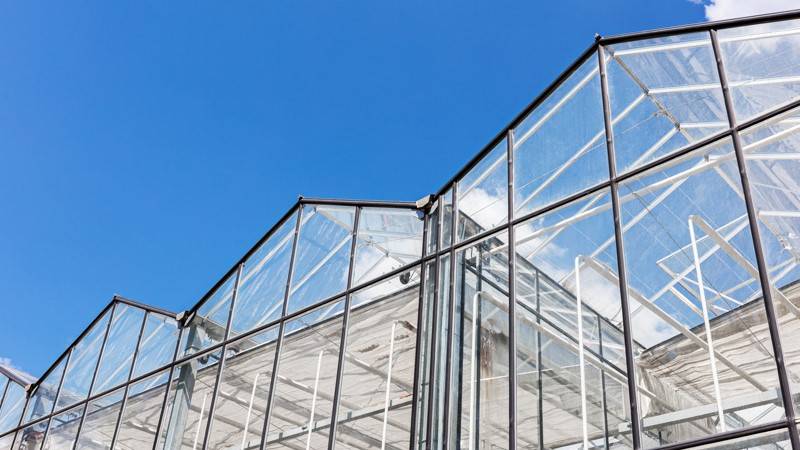As the old saying goes, “An ounce of prevention is worth a pound of cure”. The cost of greenhouse sanitation is minimal in comparison to the costs associated with fixing problems, such as weeding and chemical pest control.
The key to greenhouse sanitation is to have all employees trained to “think clean” and to be able to identify and watch for insect pests (e.g., root aphids, thrips), plant diseases (e.g., Pythium, Rhizoctonia, Thielaviopsis) and weed issues before they become a problem in the greenhouse.
Inside the Greenhouse: Focus On Clean Surfaces
Greenhouse floors and benches are potential sources of disease and insect contamination for greenhouse crops. Floors and benches should be cleaned and sanitized between each crop. This includes discarding non-saleable plant material from the benches and removing weeds and debris from under the benches. Do not use herbicides inside closed areas.
Once the trash has been removed, the entire area should be sanitized with either bleach or a greenhouse sanitizer. Wooden benches can harbor pathogens more than metal benches, so additional sanitation is required to ensure eradication.
Likewise, soil floors under benches can also be home to more pathogens than concrete. At a minimum, cover open soil areas under benches with weed barrier cloth and avoid standing water. No matter how clean the floors are, they can always be a source of contamination. Keep all tools and water wands off the floor and sanitize every week.
Outside the Greenhouse: Tackle the weeds
Weeds outside the greenhouse can be a problem if the seed gets inside. Weed seeds from the Fall can winter over inside the greenhouse and contaminate Spring crops. Weeds can also act as hosts to both insects and diseases, as well. While hand weeding will eliminate many of the weeds, applications of post and pre-emergent herbicides offer the most effective control. When using a chemical herbicide near a greenhouse, remember to turn off all exhaust fans and close all vents and doors to avoid herbicide drift into the greenhouse.
When using a chemical herbicide near a greenhouse, remember to turn off all exhaust fans and close all vents and doors to avoid herbicide drift into the greenhouse.
Tools and Equipment: Disinfect More Than Less
- Hand tools such as pruners and grafting knives should be cleaned and sanitized at least daily and more often if working with very sensitive plant material.
- Trash is the most obvious source of insect and disease contamination. Trash cans should be emptied and cleaned out daily and employees who are removing dead or damaged plant material from the greenhouse should wash their hands regularly.
Keep Growing Media and Containers Away from Pathogens
- Unused growing media, flats and pots should be stored in an enclosed area where they will not be contaminated by airborne weed seed or mineral soil. If an enclosed area is not available, the supplies should be covered with plastic sheeting for protection.
- Soil mixing and potting equipment should be thoroughly cleaned after each use to remove any growing medium or plant material, which can potentially harbor pathogens. If the equipment is stored for any length of time, it should be cleaned and sterilized again before use.
There are many very effective greenhouses sanitation products on the market, contact your greenhouse supply company for a listing and their recommended uses.
